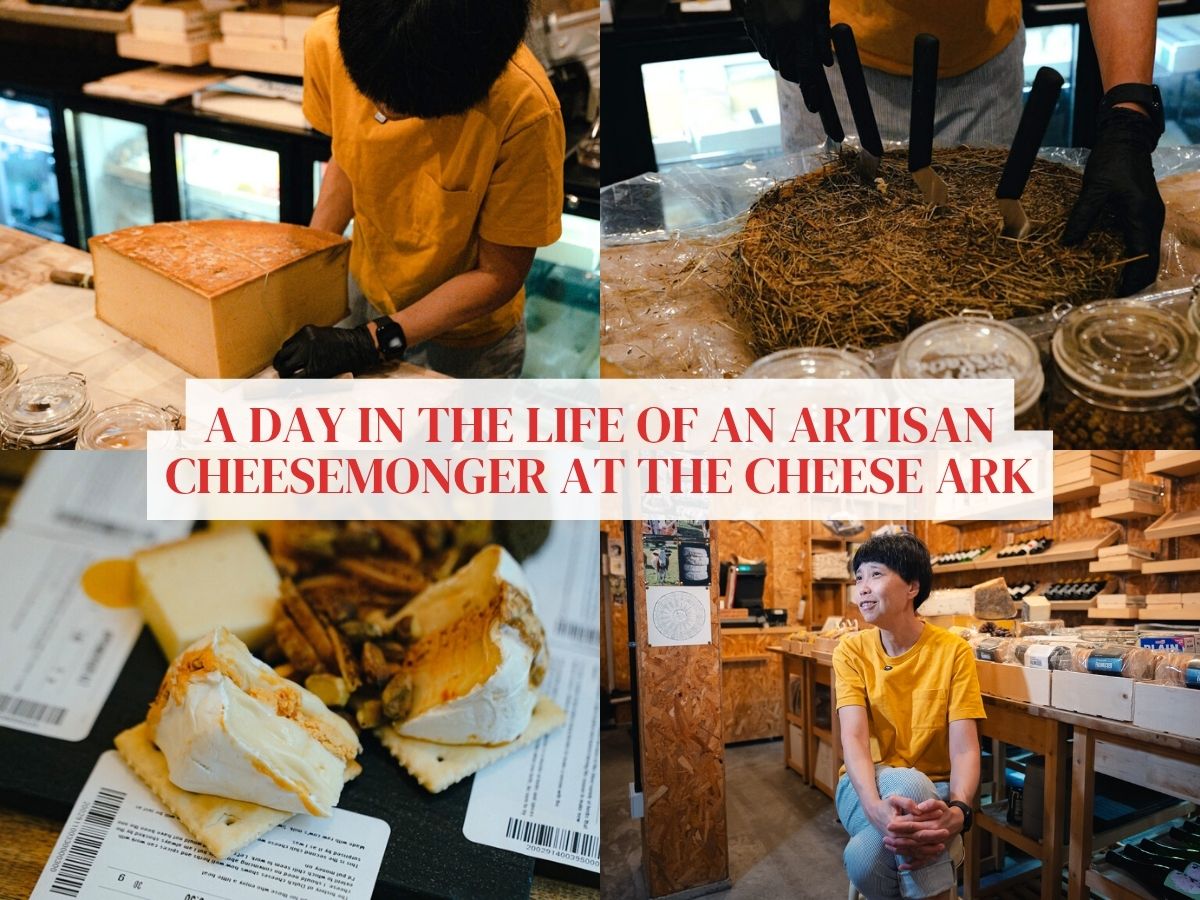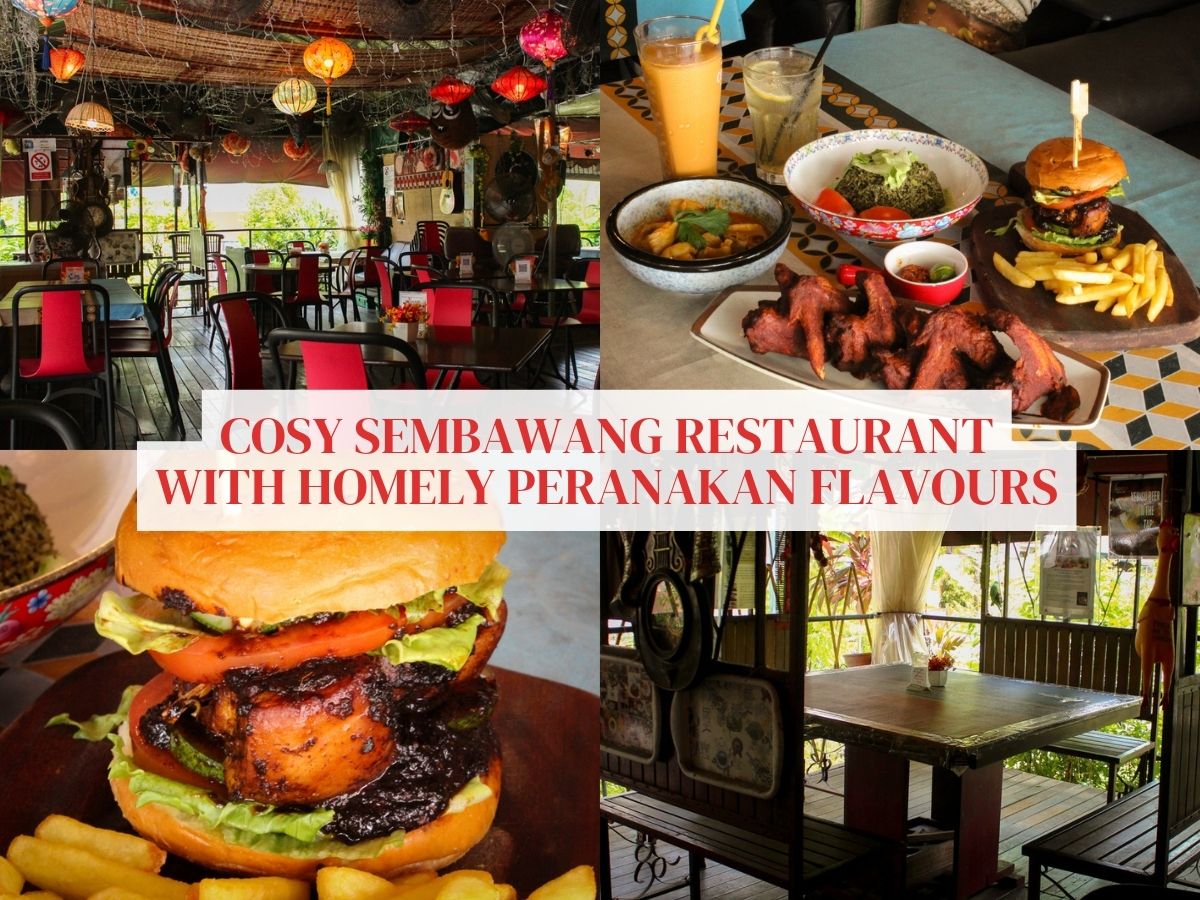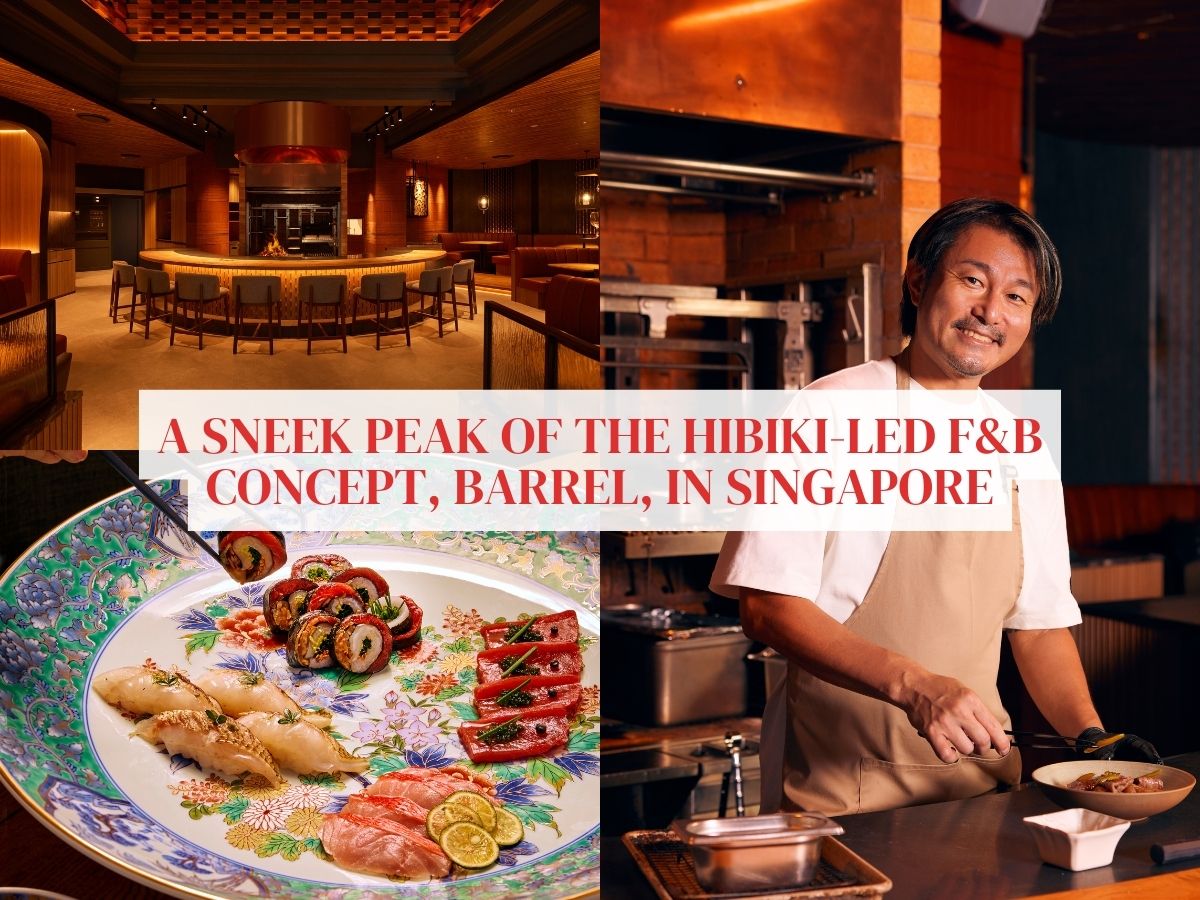Tokyo food guide: 15 tried-and-tested spots you should visit
Going to Japan soon? Then again, who hasn’t been going to Japan lately?
With the Japanese yen currency exchange still in our favour, and with affordable flights in and out, it feels like everyone’s either planning a trip or just got back.
We’re also convinced that the food is half the reason. There’s just something about the high quality and value-for-money dishes that define Japanese cuisine, where even convenience store onigiri hits the spot and McDonalds tastes better.
This guide is catered towards places you can drink and dine in Tokyo, the capital of Japan. From classic Japanese dishes we know and love such as ramen and soba, to cafes serving the most delectable desserts, here are some of our favourite spots worth squeezing into your itinerary.
1. Fuglen

Why visit? In the Tokyo food scene, where coffee culture is an integral part of its identity, Fuglen is a cafe that stands out for its unique blend of Norwegian and Japanese flavours. This Oslo-born coffee shop quietly opened in a corner in Shibuya in 2012, and has now become a pilgrimage site for caffeine fans visiting Tokyo.
Once evening rolls around, Fuglen’s space undergoes a metamorphosis, pivoting to dole out craft cocktails, wines and microbrews. A nod to its birthplace in Oslo, the space is decked out in Scandinavian furnishings, creating an atmosphere that feels less like a cafe and more like the living room of an impossibly stylish friend.
Crowd favourites: We find that the milk often dominates the coffee equation when you’re in Japan, but Fuglen’s cappuccino (from 520 yen or S$4.78 for a single shot) was wonderfully balanced. Its rotating selection of beans typically delivers bright, fruit-forward notes that are lighter on the palate.
No visit would be complete without sampling its Norwegian waffles (from 490 yen) at its Asakusa outlet. While these can be paired with toppings such as smoked salmon and cream cheese (1000 yen), the waffles shine brightest in its unadorned state. The subtle tanginess in the batter creates a depth of flavour that’s both unexpected and addictive — a complexity best complemented by nothing but a judicious drizzle of honey.
2. Atelier Matcha
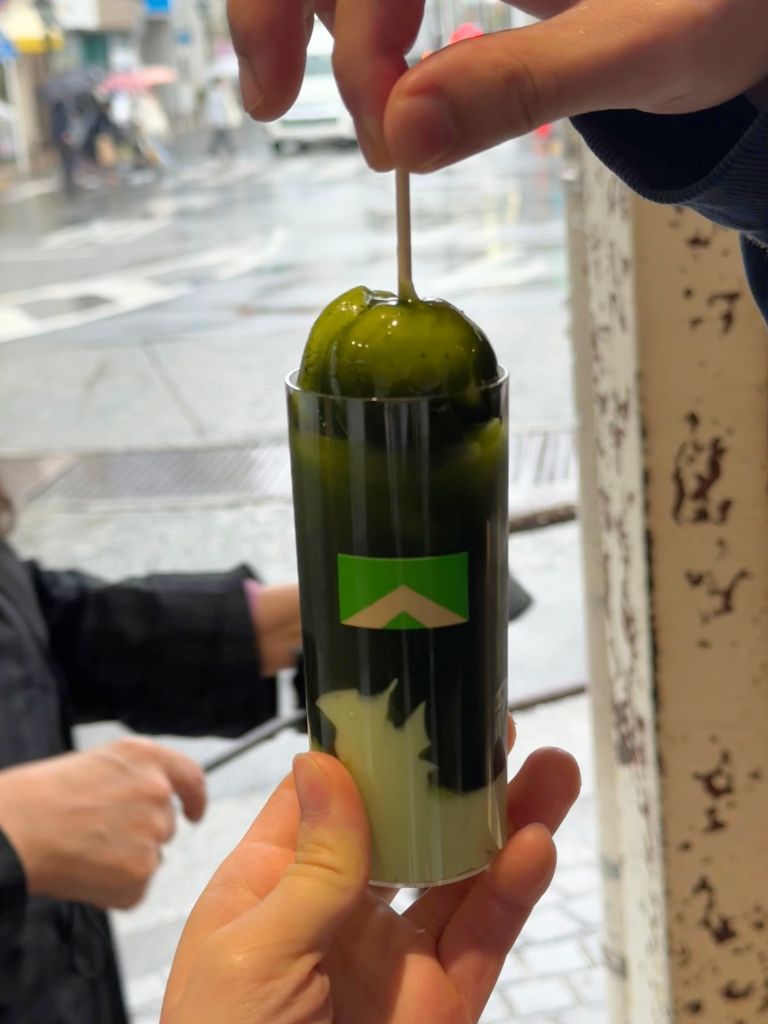
Why visit? Atelier Matcha strikes a harmonious balance between tradition and modernity. Created by Yamamasa Koyama-en, a revered tea purveyor with over 160 years of history, the cafe honours time-honoured matcha practices while adding a fresh, contemporary twist.
While the matcha here is not traditionally hand-whisked, and an electronic matcha whisk is used instead, the latter actually produces a frothier, creamier matcha that’s a delight to sip on. It also hardly makes a difference in its latte form.
An insider tip: Consider a day trip to its Kamakura kiosk, just a short train ride out of Tokyo. The lines are shorter and the shelves are stocked with its coveted matcha powder.
Crowd favourites: While the matcha latte (from 740 yen) represents the baseline of excellence here, the brand elevates the experience with parfait-like creations. The matcha warabi-mochi shinuko (890 yen) has a good textural contrast of the silky creaminess against chewy mochi.
If you visit its Kamakura outlet, try its matcha mitsu (720 yen), which features plump mochi dumplings bathed in an intense matcha syrup and mixed with clouds of sweetened whipped cream. The bitter and sweet exist in harmony, and texturally, the chewy mochi is nicely balanced by the softness of the cream.
3. Nakau
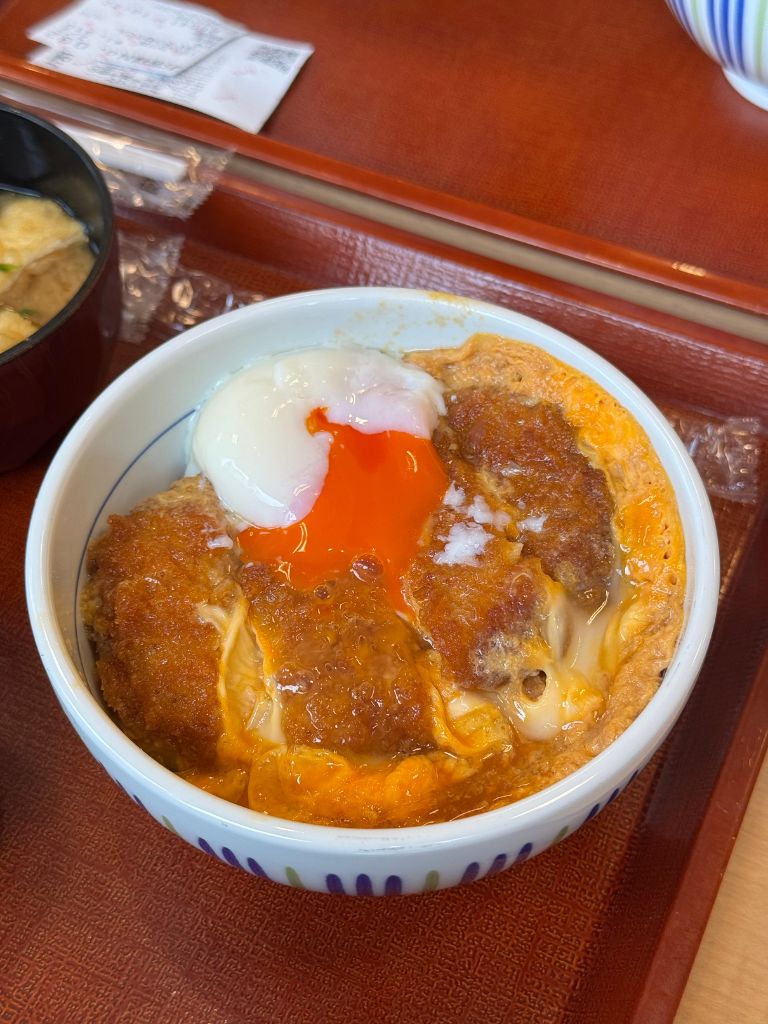
Why visit? While the food-obsessed travellers might fixate on sushi counters and rareified ramen shops, there’s some authenticity in embracing the everyday dining routines in Japan’s capital. Nakau, a 24-hour food chain, isn’t as well-known as its counterparts among Singaporeans, but regardless, it remains a popular option for the Japanese workforce.
With eight strategic outposts across Tokyo’s major districts, it can serve as a late-night salvation or quick lunchtime retreat. Here, you’ll find Japanese comfort food stripped of all its bells and whistles — just an affordable rice bowl done well, really.
Crowd favourites: The katsu don (from 640 yen) features a crisp exterior and tender meat within, all for the price of a fancy cup of coffee elsewhere. Supplement the bowl with an onsen egg (80 yen), transforming the humble bowl with decadence as the creamy yolk binds everything together.
However, what you should really go for, is Nakau’s oyakodon (from 450 yen), the iconic combination of chicken and egg, which it has built its reputation on. Choices at the chain include a cheese version (610 yen) or one amplified by an additional egg yolk (540 yen). A generous sprinkle of shichimi (Japanese seven spice blend) adds a slight kick that’ll awaken the palate.
4. Capoon Matcha Cafe
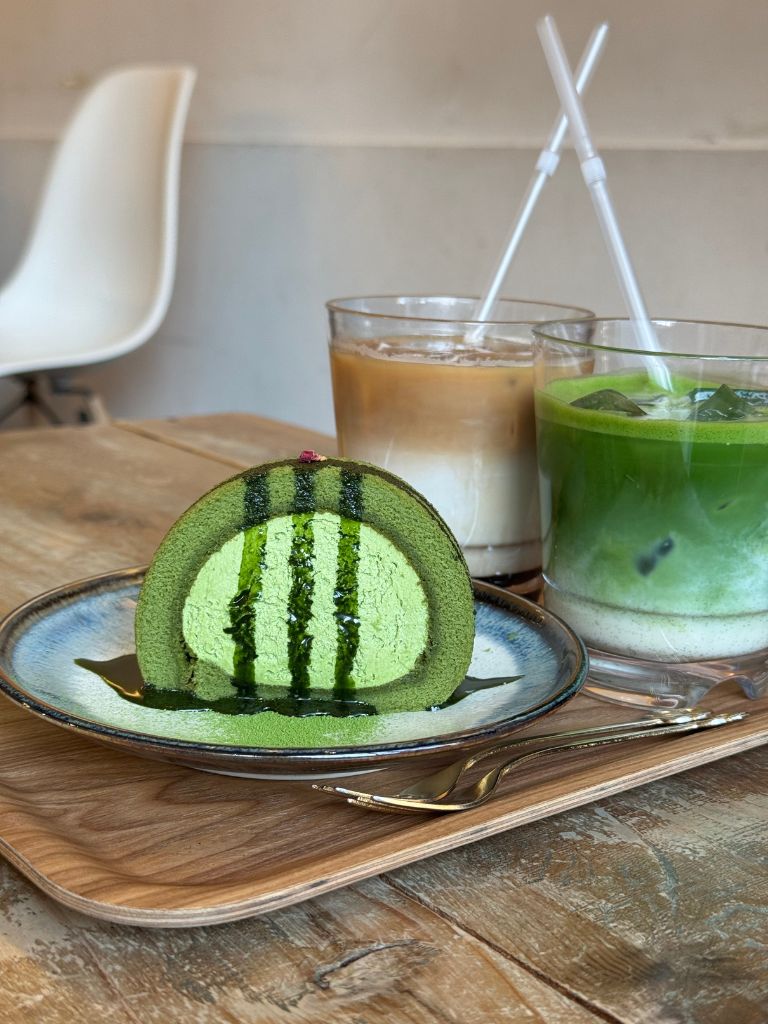
Why visit? Hidden amongst the vintage boutiques and second-hand treasures lies Capoon Matcha Cafe. The cafe’s centrepiece is the imposing stone mill that grinds the tea leaves into matcha before your eyes, ensuring the freshness of your matcha. The weekend crowd of discerning locals (always the most reliable endorsement in Tokyo’s food scene) suggests that this extra touch doesn’t go unnoticed.
Here, the bitter complexity of properly prepared matcha commands the centre stage on its menu, with its intimate space and focused matcha menu showcasing how the cafe combines innovation with convention. Additionally, Capoon Matcha cafe’s take on simple but unique confectionery constructions makes this a standout from the other matcha cafes.
Crowd favourites: Capoon’s matcha cheesecake (600 yen) and matcha rollcake (600 yen), coloured by shades of green, make the desserts almost too pretty to eat. Accompanied by the matcha syrup, the matcha’s natural umami and subtle vegetal notes shine through clearly, balancing the bitter and sweet notes perfectly in its desserts.
The shop’s signature matcha au lait (600 yen) has different levels of sweetness available. To experience the tea’s full character, have it with less sugar. While the presence of milk is pronounced, the freshly ground matcha still manages to assert its presence, resulting in a refreshing beverage.
5. Kirimugiya Jinroku
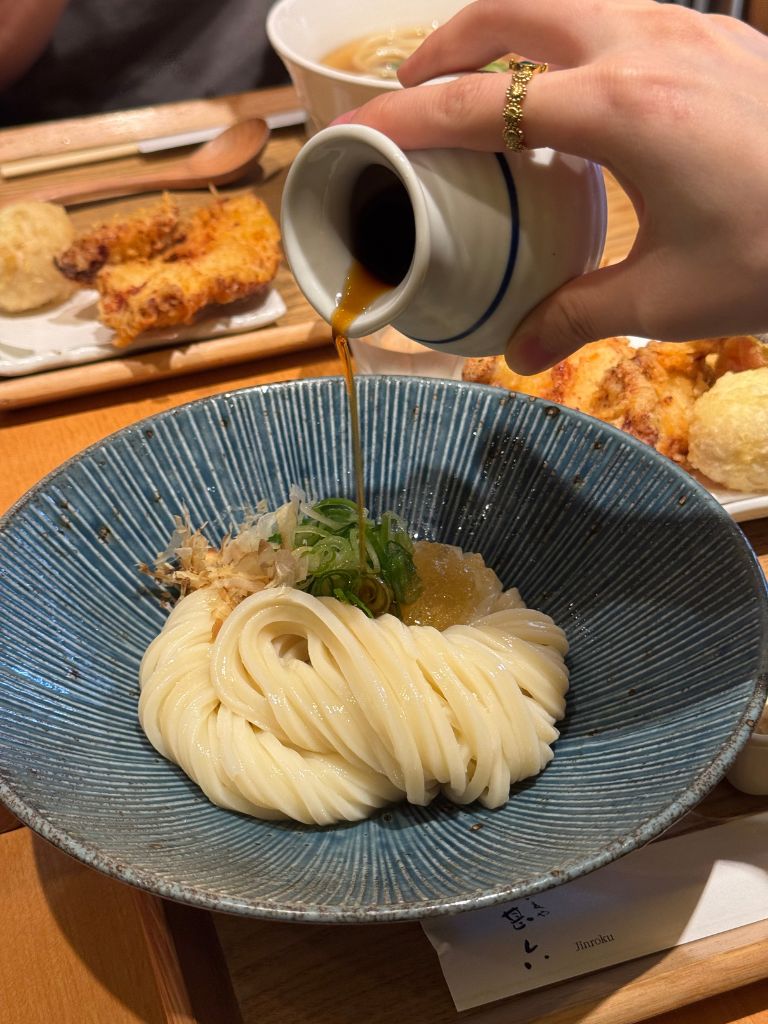
Why visit? Just a stone’s throw from Shinjuku’s bustling centre, Kirimugiya Jinroku earned its Michelin recognition by perfecting not one, but three different culinary disciplines — this udon speciality restaurant is incredibly versatile with its expertise in udon, sake and masterfully executed tempura that’s made-to-order.
The restaurant elevates udon beyond the expected hot soup versions, offering alternatives such as cold zaru or cold bukkake (700 yen each), where freshly made and cut noodles, with their characteristic smooth yet firm texture, are paired with concentrated broths you can dip or pour over the noodles. The result is a more nuanced appreciation of the noodle’s inherent qualities.
Crowd favourites: You can opt to customise your own perfect set here by selecting your preferred udon style and adding tempura selections. For those preferring a curated experience, try the oyakoten udon (1200 yen), which comes with your chosen udon style accompanied by two generously sized pieces of chicken tempura, and a delicately fried egg tempura.
The tempura deserves a special mention here. The light batter adheres to the ingredients well, enhancing its natural flavours rather than masking the ingredients it envelops. The chicken, for example, maintains a remarkable juiciness within its crisp exterior, a testament to the chef’s skill and kitchen’s precision.
6. All Seasons Coffee
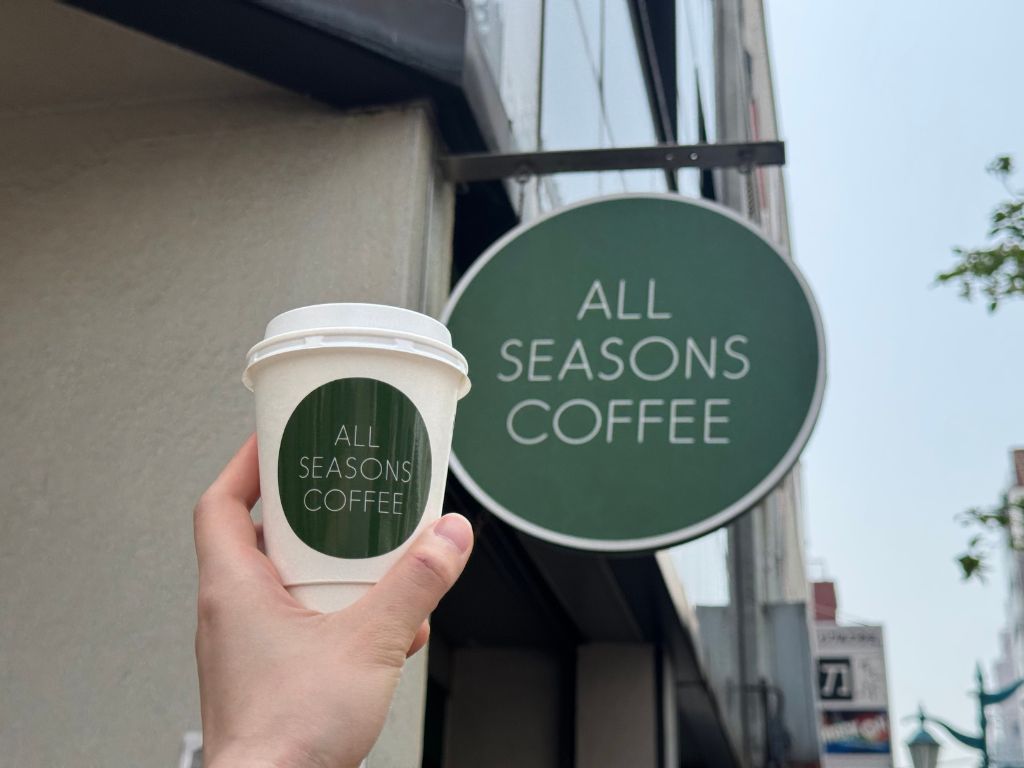
Why visit? Tucked away from Tokyo’s relentless energy lies All Seasons Coffee, a spacious haven where Tokyo’s food and coffee cultures converge in an atmosphere of genuine hospitality. Unlike the city’s cramped cafes, All-Seasons offers an increasingly rare Tokyo commodity — room to breathe.
What distinguishes All-Seasons in Tokyo’s competitive coffee landscape is its commitment to bean diversity and personalised service. The knowledgeable baristas transform what could be an intimidating experience into an accessible coffee education, offering thoughtful recommendations based on individual flavour preferences. This approach makes it particularly welcoming for international visitors navigating Japan’s sometimes intricate coffee protocols.
Crowd favourites: With so many beans on hand, you have to try its hand-drip coffee (price varies). It properly showcases the shop’s bean selection expertise, with each cup meticulously prepared to highlight its specific flavour characteristics.
The unexpected star at this coffee sanctuary in the neighbourhood is the classic pudding (700 yen), a dessert that encapsulates nostalgia in a silky-smooth form. This old-fashioned sweet isn’t something you can find in Singapore anymore and is a perfect way to conclude your visit, with the slightly caramelised notes lingering on your taste buds.
7. Togoshiya
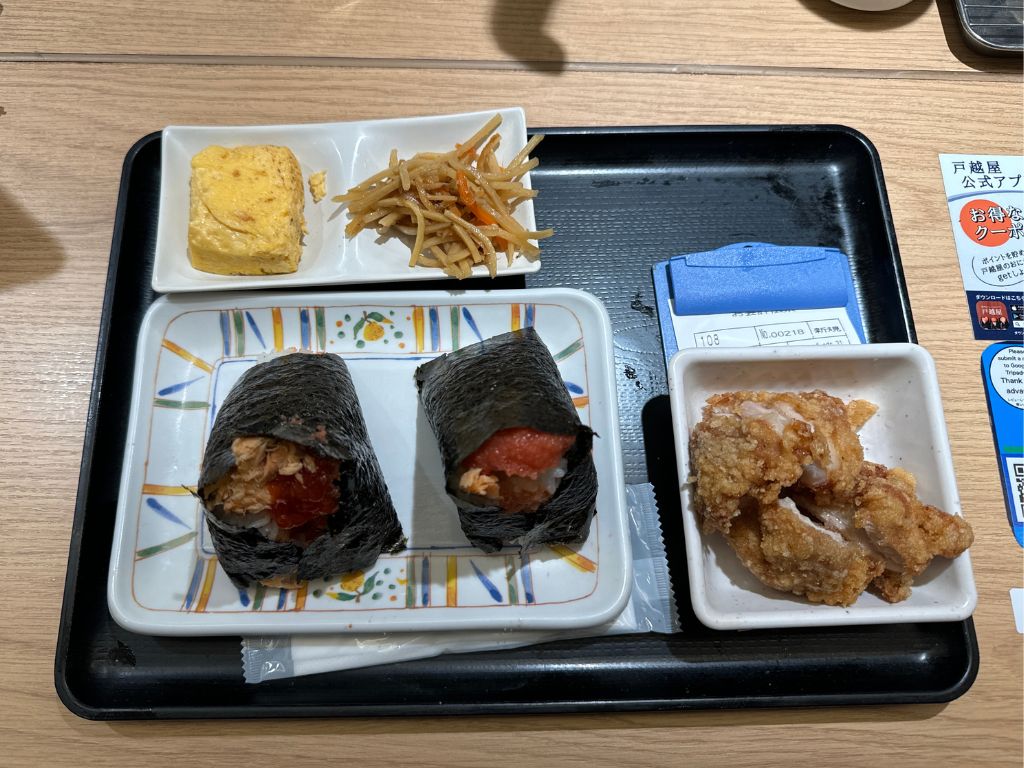
Why visit? In a city where you can find delicious onigiri in every konbini, at every corner, Togoshiya might seem like an unnecessary crusade. Thankfully, the specialist onigiri restaurant is quite convenient, sitting strategically at the edge of the bustling Shibuya, perfect for refuelling before retail adventures.
Togoshiya elevates the experience through variety and craftsmanship. Its riceball selection is impressive, with nearly 40 different flavour varieties, each substantially larger than its konbini counterparts. Each rice ball is crafted to order, allowing diners to witness the transformation of these basic ingredients into perfect, hand-held meals.
Crowd favourites: The combo D (1500 yen) offers an ideal introduction to Togoshiya’s repertoire, featuring three modestly-sized onigiri accompanied by traditional sides of miso soup, picked vegetables, tamago and chicken karaage. This well-composed set provides a sampler of the establishment’s menu, allowing first-timers to identify favourites for future visits.
The chicken karaage (180 yen per piece) deserves special mention for its excellence at a place specialising in rice balls. Each piece achieves that perfect textural contrast between crisp exterior and juicy interior that defines properly executed karaage. While the price point sits slightly above casual dining alternatives, the portion size and quality create a satisfying meal that best demonstrates why Tokyo’s food scene rewards those willing to seek out specialists who perfect seemingly simple dishes
8. Baso Omotesando
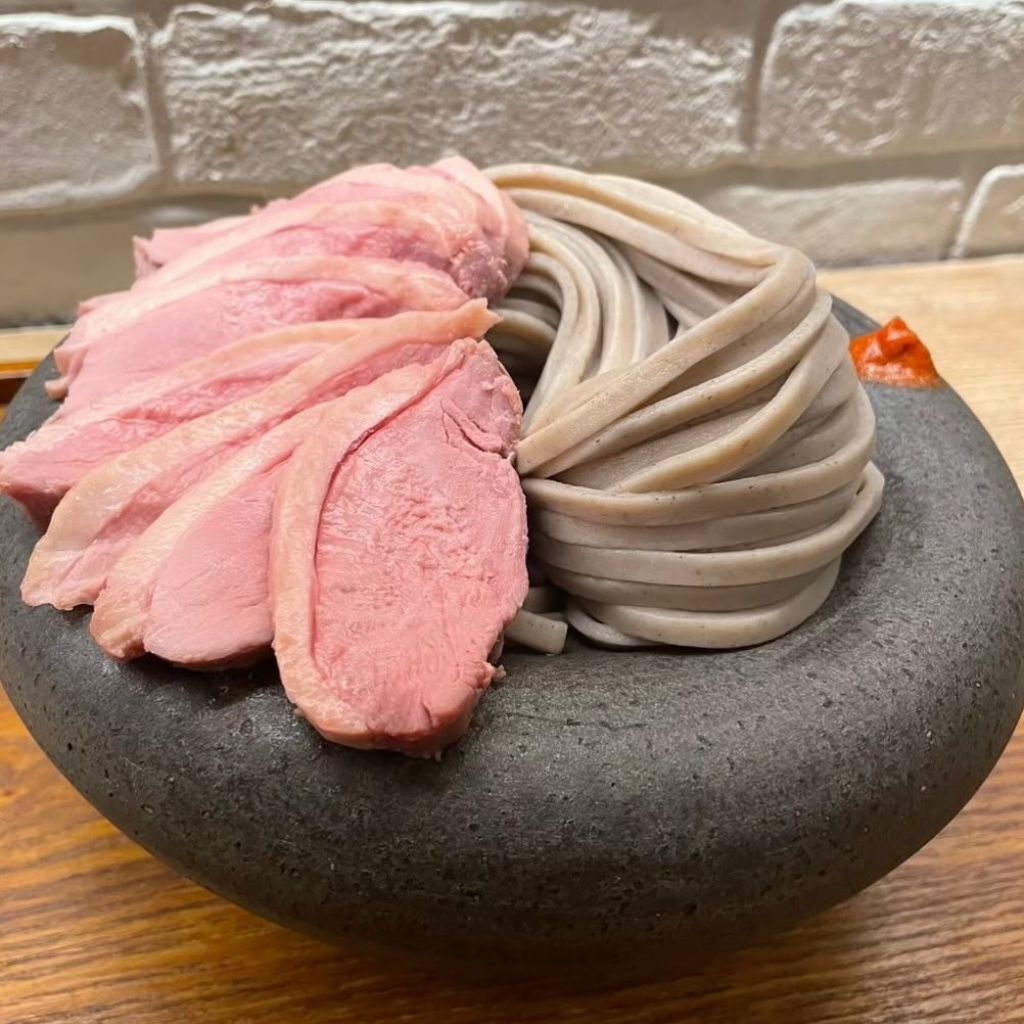
Why visit? In the Tokyo food landscape, where soba specialists have practised their craft for generations, Baso Omotesando represents a youthful evolution of tradition. Launched in 2023, the restaurant has gone viral amongst younger Tokyo diners for its masterful pairing of premium meats and buckwheat soba.
The restaurant’s interior embraces a “Japandi” theme with dark wooden furnishings bathed in warm amber lighting to create a contemplative dining experience. Due to the modest space and limited seating, try to visit on weekdays instead for a less crowded experience.
Crowd favourites: Baso Omotesando’s most iconic dish is likely its shio kamo no tsuke (salted duck soba, 1290 yen). The soba noodles are supple and firm with a noticeably thicker texture to give it that chew. To maximise the nutty aroma and texture of the buckwheat flour, the preparation methods must be adjusted based on temperature and humidity.
The duck showcases technical precision, cooked at carefully controlled low temperatures to achieve the iconic pale pink hue that is as pretty as it is delicious. This precise technique yields a cut of meat that is succulent and tender.
9. Good Munchies
Why visit? In the global burger hierarchy, Tokyo rarely receives recognition, a clear oversight when places like Good Munchies exist. Situated just beyond Shinjuku’s sensory overload, this unassuming spot exemplifies Japan’s talent for importing foreign concepts and refining them to perfection through meticulous attention to quality ingredients and technique.
The patties used at Good Munchies are made in-house, incorporating Japanese wagyu fat, a subtle but transformative ingredient that infuses each bite with a profound beefiness and luxurious richness. The steady stream of local patrons on even the quietest weekday afternoon is a testament to Good Munchies’ reputation in the Tokyo food scene.
Crowd favourites: Simple but well-executed dishes are the hallmark of a good restaurant, and that’s precisely what Good Munchies’ lunch exclusive, the classic cheese burger (1078 yen), is. The patty, juicy and intense with beef flavours, comes crowned with melted cheddar that drapes perfectly over the meat, all embraced by pillowy buns that don’t require any extra embellishments.
The weekday lunch service includes a free flow salad bar (450 yen), a bargain you won’t find in Singapore. The produce here is extremely fresh while house-made salad options such as coleslaw and potato salad are available as well.
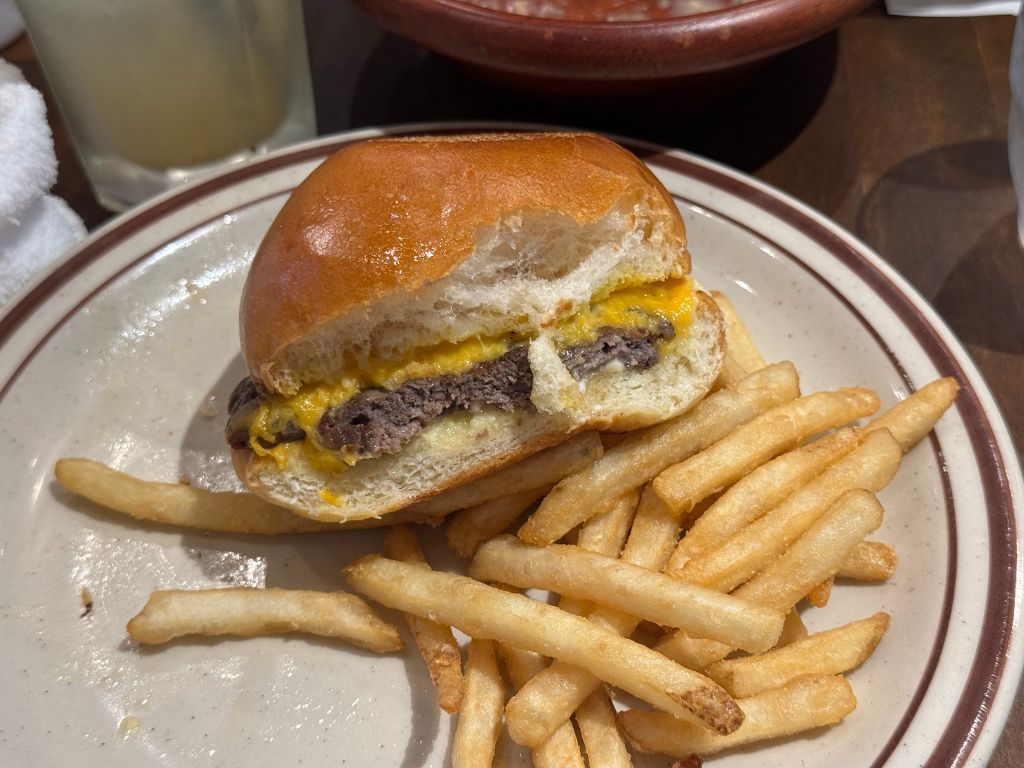
10. Kisoji Shabu Shabu
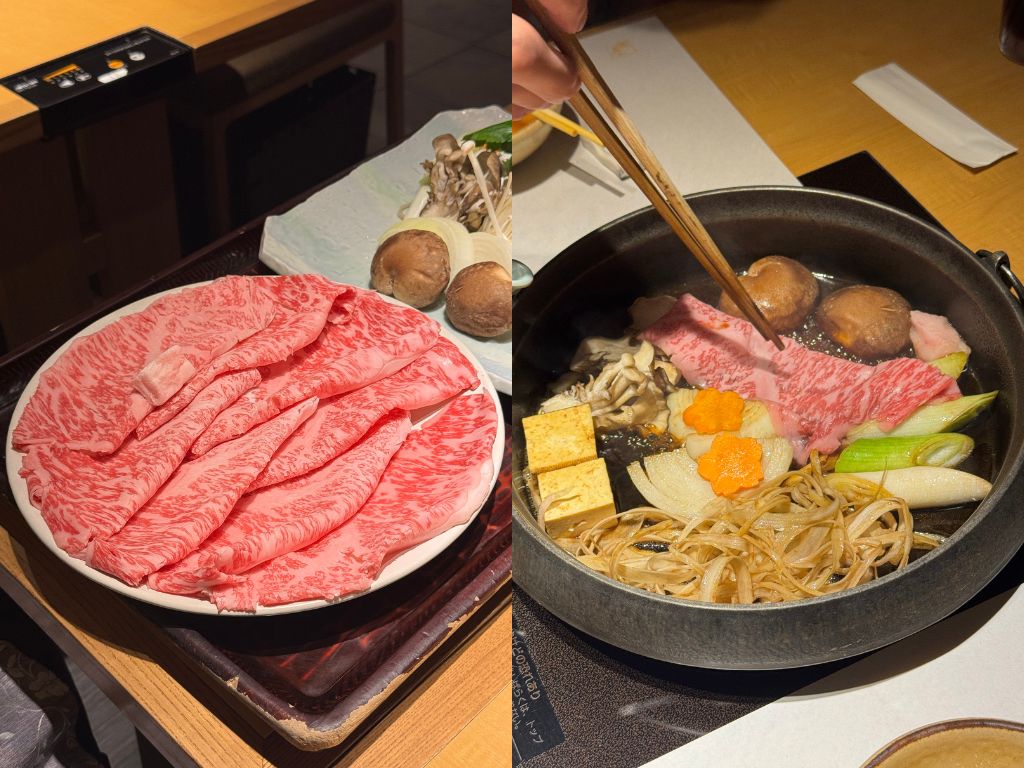
Why visit? With sukiyaki spots few and far between in Singapore, Kisoji offers a compelling reason to seek it out while in Japan. With over 100 locations throughout Japan, the restaurant offers accessibility without compromising on the authenticity of the dining experience.
Prices are on the more premium side compared to other meals in Japan, though it’s well worth the price. Kisoji uses high-grade Japanese wagyu and seasonal vegetables to ensure that the ingredients are naturally enhanced. The warm and attentive service here also adds another dimension to the experience, you’ll feel pampered here.
Crowd favourites: Even the entry-level marbled wagyu beef sukiyaki (5940 yen) delivered a comprehensive and fulfilling experience. The meal begins with an appetiser, then moves on to tender beef and vegetables accompanied by tomato salad, rice, and pickles, before finishing with udon and your choice of dessert, either warabi mochi or ice cream.
The main course begins with beef slices briefly cooked in a mixture of sweet soy sauce and dashi, developing caramelised notes before being served. While it’s delicious on its own, tradition dictates dipping the cooked meat into raw eggs, a practice that creates a creamy coat on the meat, enhancing the beef’s rich taste. The result is a meat that’s heavy on flavour, but with an almost liquid-like-bite dissolving on your palate.
11. Ramen Kurouzu
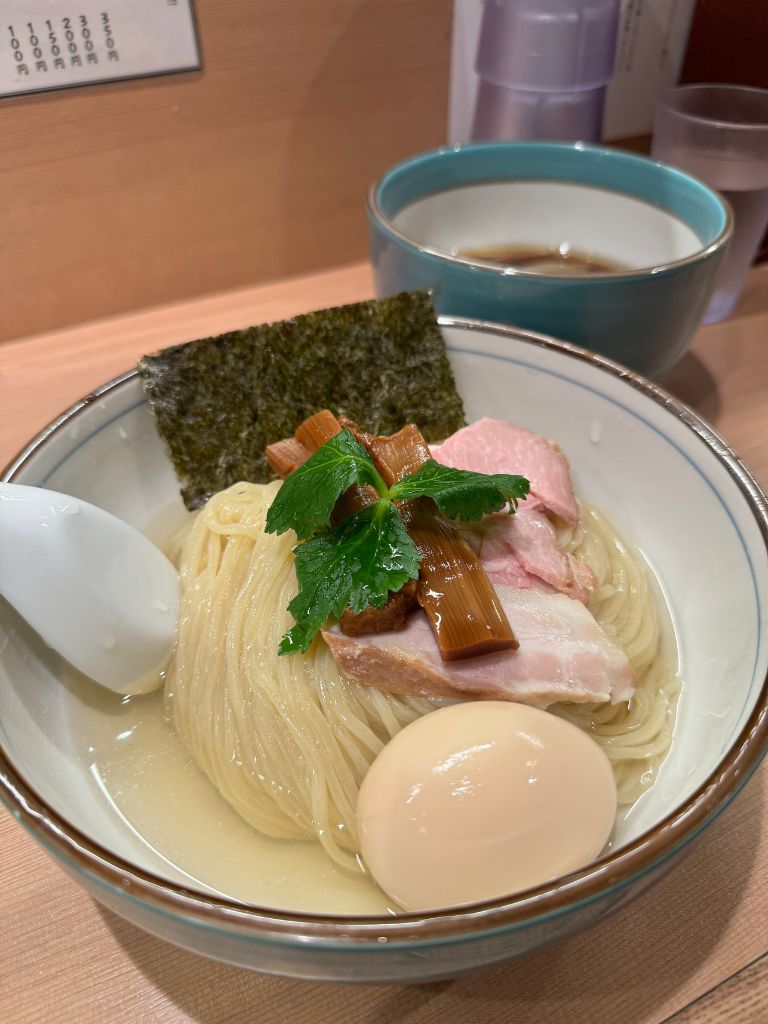
Why visit? In a metropolis where ramen shops are plentiful, Ramen Kurouzu earns its place on the list through its reliability rather than any sort of online hype. This unpretentious establishment offers a diverse menu catering to varied preferences without sacrificing on the quality.
The noodles achieve that elusive balance of resistance and yield that defines proper ramen. Even seemingly minor components like bamboo shoots receive careful attention, emerging with intensely savory notes that add an extra layer of indulgence to the bowl of noodles.
Crowd favourites: The special tsukemen (1250 yen) is less commonly found in Singapore. The noodles served in this dish are slightly thicker than the ones served in the regular ramen, and are served alongside a concentrated dipping sauce. The sauce, rich with umami and complexity, clings well to each strand of noodles, thanks to the specific flour used in the noodles’ composition.
For those seeking lighter flavours, the blackthroat seaperch soba (1300 yen) is an intriguing alternative to the chicken and pork-based broths. The fish-forward soup base is a speciality at Ramen Kurouzu and features a clean, oceanic profile that’s rarely found outside of Japan.
12. Japanese Steak Bowl and Beef Curry
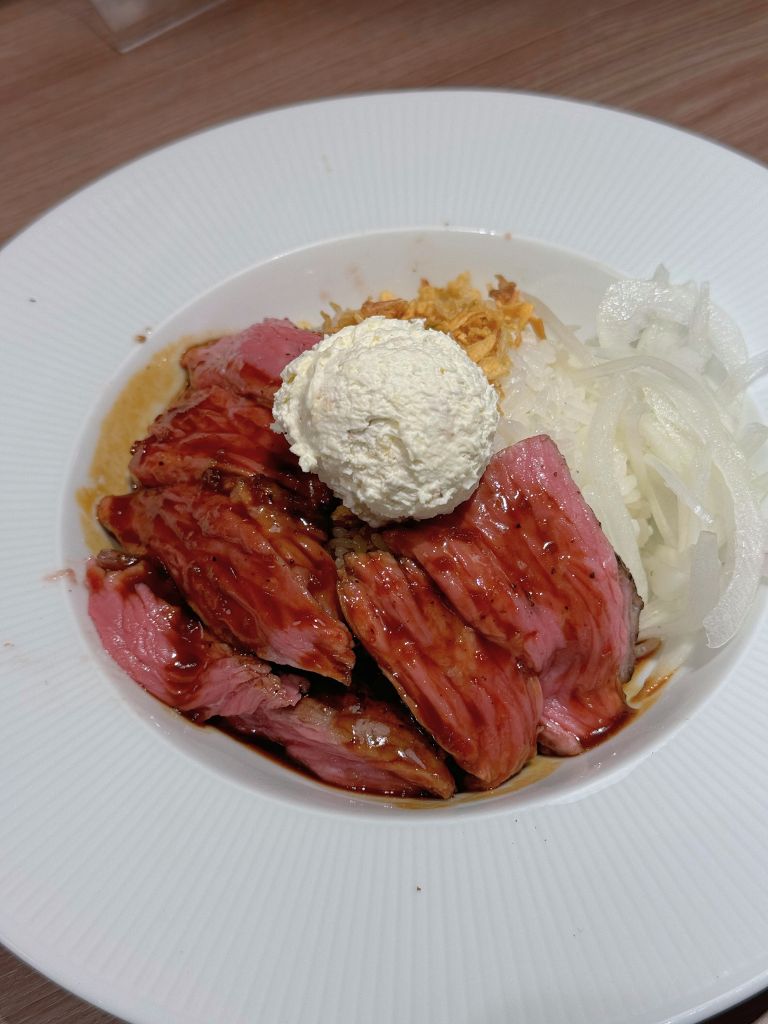
Why visit? Beyond the social media hype that has made Japanese Steak Bowl and Beef Curry TikTok famous, the concept of this restaurant honours the fundamentals of Tokyo food culture — quality ingredients and value. The restaurant takes a minimalist approach to its menu, essentially offering only two items, allowing the focus to be on executing these two dishes well.
What distinguishes these beef bowls is the unexpected addition of whipped butter, which provides textural contrast and cuts through the richness of the meat. The steaks at this eatery are carefully selected and aged for forty days before being served to the consumer.
Crowd favourites: The customisable steak bowl (from 1090 yen) invites diners to tailor their experience according to appetite and preference. Beyond selecting meat portions, visitors can choose between standard white rice, garlic fried rice, bacon basil rice (an additional 180 yen) or salad rice (additional 240 yen). Optional toppings such as egg yolk (100 yen) allow for further personalisation. The steak itself achieves that perfect balance of tenderness and texture, with a consistently perfect medium-rare presentation.
The steak and stewed curry rice (1690 yen) might initially seem like a secondary offering, but is equally as well done as the steak bowl. The slightly sweet Japanese-style curry complements rather than overwhelms the beef, which tastes like it was cooked slightly longer than the one found in the steak bowl, resulting in cleaner bites that pair well with the curry’s robust flavours.
13. Centre the Bakery
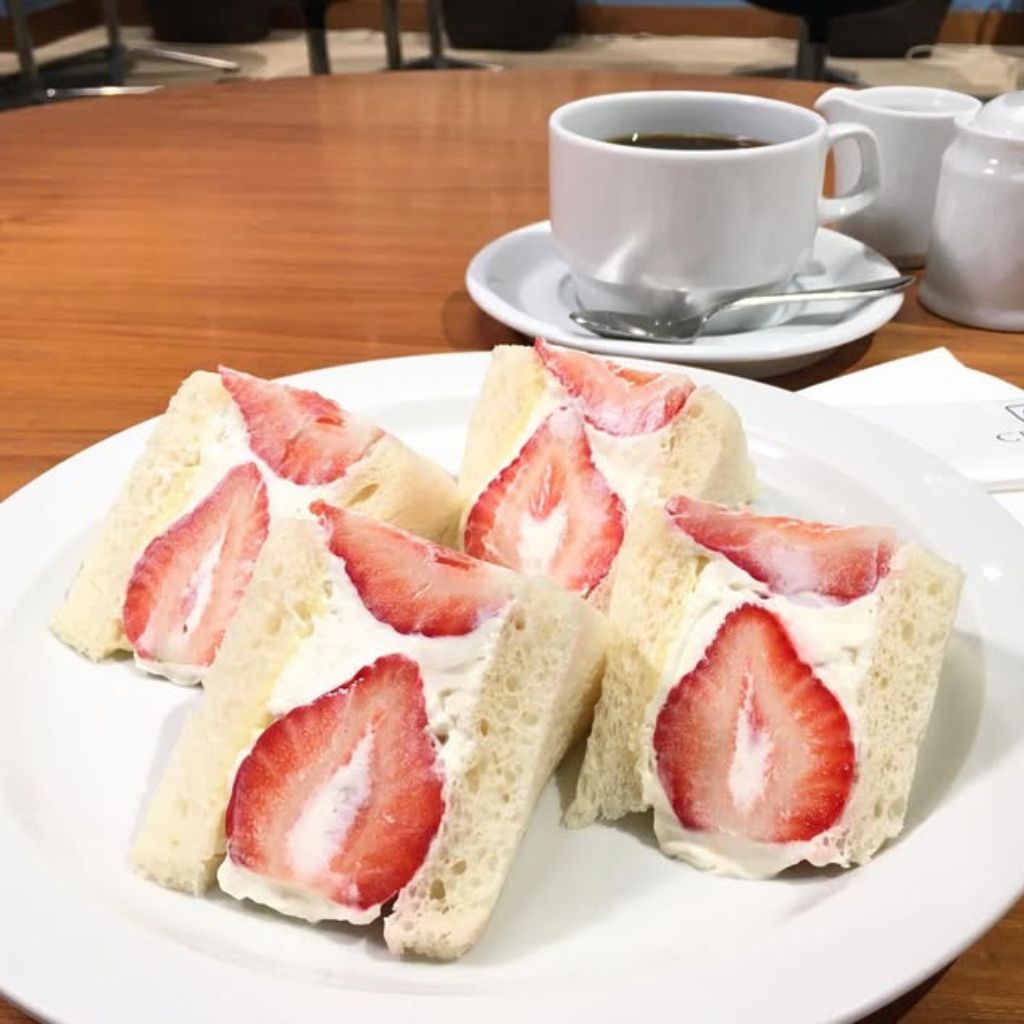
Why visit? Centre the Bakery in Ginza stands in Tokyo as a temple to toast, elevating the humble slice to ceremonial status. The bakery’s signature experience involves selecting a personal toaster from an impressive collection before returning to your table with a private toaster.
Unlike the intimate confines of many Tokyo cafes, Centre the Bakery has an expansive space divided between retail bakery and dining area, with abundant natural light creating a peaceful atmosphere. This makes the cafe well-suited for group dining, a rarity among Tokyo’s specialty establishments.
Crowd favourites: The jam and butter set (1870 yen) somewhat perfectly encapsulates the restaurant’s philosophy. It includes breads made with flour from Japan, North America, and Britain, each with distinct characteristics and recommended ways of eating. Accompanying spreads range from French and Hokkaido butters to jams and honey, complementing the different toasts well.
For those seeking more substantial offerings, the cheese toast (1,650 yen) features airy shokupan crowned with melted raclette, while the French toast (1,980 yen) achieves that elusive balance between sweet and savory. Both toasts use Centre’s renowned shokupan as the foundation for these creations, demonstrating how the simplest dishes can be transformed by the highest quality ingredients.
14. Savoy

Why visit? Tokyo’s food reputation doesn’t immediately evoke thoughts of pizza, but Savoy makes a convincing argument that it should. The perpetually crowded establishment has developed a fervent following for its Neapolitan-style pizzas, characterised by soft and thin crusts with a subtle chewiness. The crust is fermented to allow it to develop a more complex flavour.
What truly distinguishes Savoy, however, is the incorporation of ingredients Japan is famed for, into selected pies, and even earned the brand a featured segment in David Chang’s Netflix series, “Ugly Delicious”. While the location requires some effort to reach, the online reservation system mitigates the nightmarish wait times, making it more accessible for visitors.
Crowd favourites: The unassuming margherita (1980 yen) serves as Savoy’s benchmark and remains among its most ordered items. The charred perimeter of the crust contributes smoky notes that complement the bright acidity of the tomato base, while pools of melted mozzarella provide a luscious, creamy counterpoint. The focus on quality produce is a demonstration of how dishes can be simply elevated.
For the culinary adventurer, pizza Y (3960 yen), the creation featured on Netflix, presents an intriguing study of cross-cultural fusion. The pizza is topped with a gently seared bluefin tuna and served alongside some wasabi, an unconventional combination that goes against the fundamentals of taste. Yet, the rich brininess of the tuna finds an unexpected harmony with the cheese, creating a luxurious richness that the wasabi can tamper down when desired — truly a creation that can only exist in the Tokyo food landscape.
15. Yamamoto Hamburg
3-6-18 Shibuya, Shibuya-ku, Tokyo 150-0002, Japan
Open: Monday to Sunday (11am to 9.30pm)
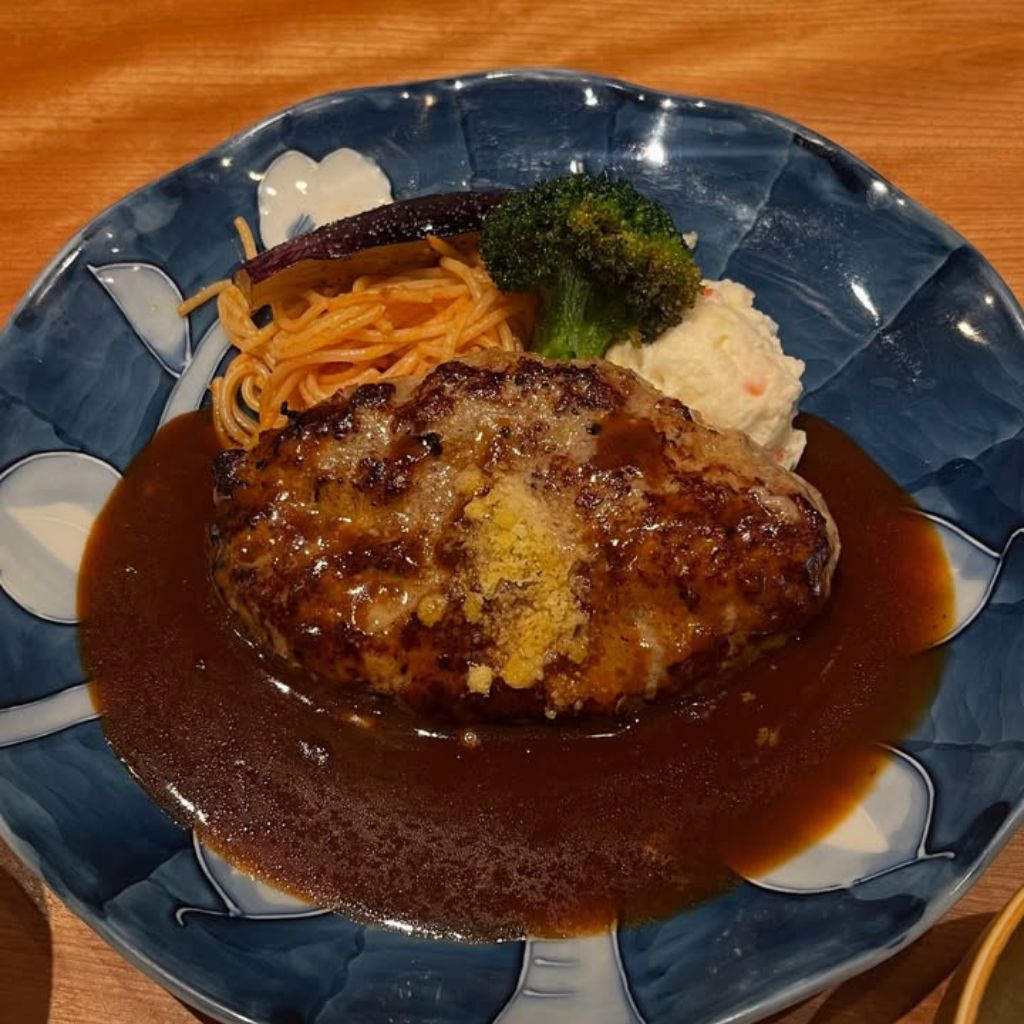
Why visit? Well before Yamamoto Hamburg opens its doors daily, it is not uncommon to find queues beginning to form outside its unassuming storefront — a testament to its mastery of the classic Japanese hamburg steak. Few dishes capture Japan’s take on Western comfort food quite like this one, and Yamamoto Hamburg delivers a version that’s worth the wait.
Whether it’s the meticulous made-to-order preparation, the generous portions, or the complimentary rice refills, Yamamoto Hamburg has earned a solid reputation amongst the locals, who return again and again despite the inevitable wait times. Yamamoto’s consistency and quality is that enticing.
Crowd favourites: The signature Yamamoto Hamburg (from 1680 yen) elevates a classic hamburg steak with its unique construction. The beef patty conceals a filling of creamy mushrooms and gorgonzola cheese, a cousin of the blue cheese. This creates bursts of intense flavour and creamy mouthfeel, best paired with the Japanese rice.
The patties are also topped with a demi-glace sauce that pairs equally well with the accompanying rice. Despite the intense flavours of the dish, the profound beefiness and remarkable juiciness of the patty still manages to shine through.
More travel plans in store? How about exploring our Bangkok cafe guide or these cafes in Bali? We also spoke to popular travel blogger Girleatworld who gave us her best Kyoto recommendations.

